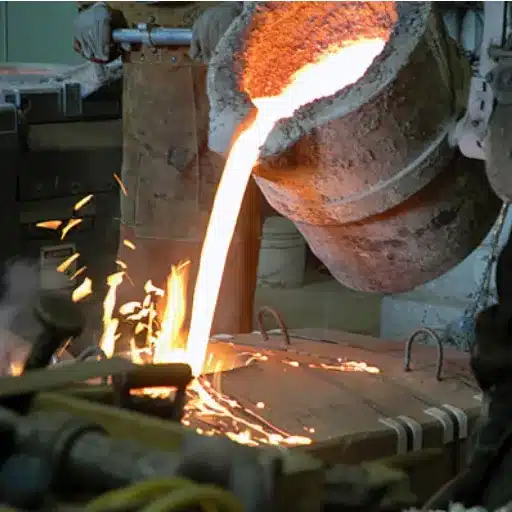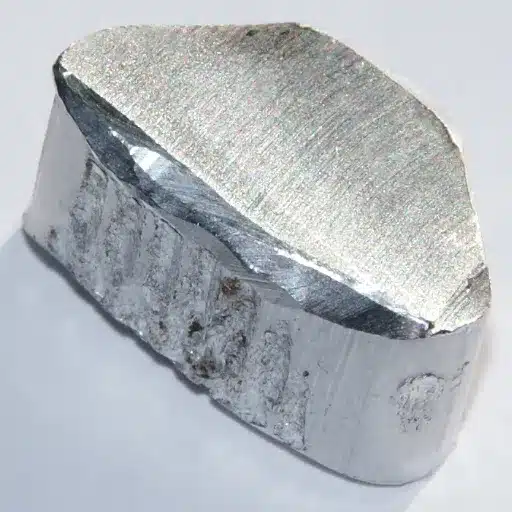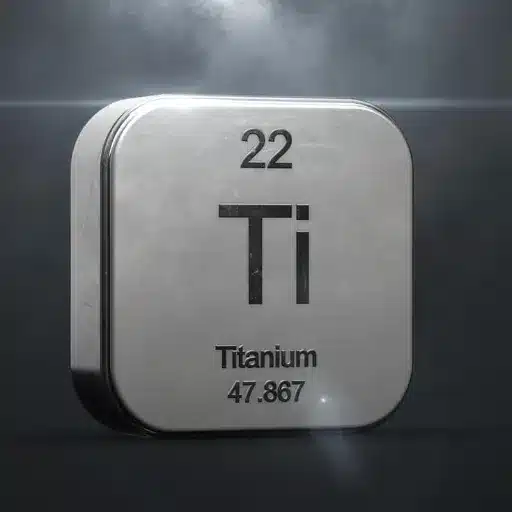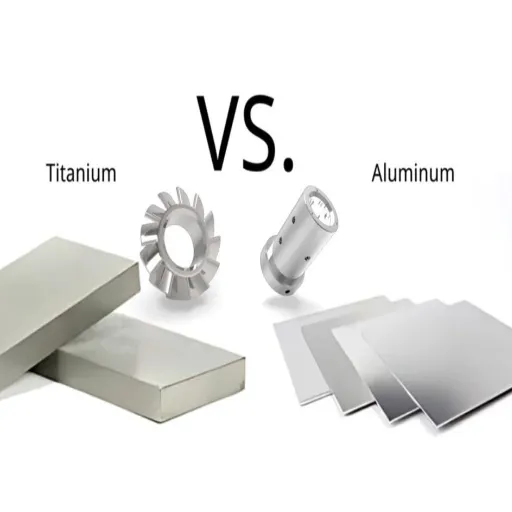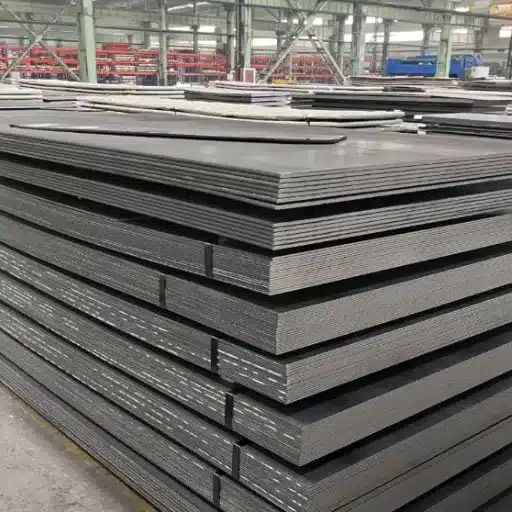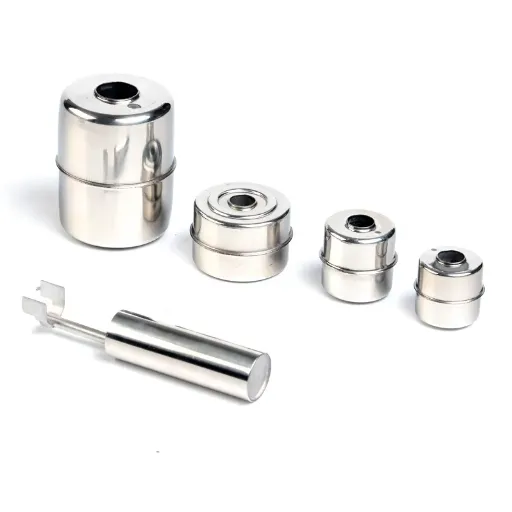Industries that require due diligence and intelligence in the manufacture of almost all components have stainless steel pipe coils as a key component. For most users, such coils are engaged for heat exchangers where the coils are used for the cooling system of power generators. Heat exchangers are utilized in power plants, chemical processing units, and HVAC systems. Their corrosion resistance and thermal properties enhance their capabilities in such applications.
Stainless steel pipe coils are also used in the oil and gas sector to transport fluids, especially under higher pressures and/or extreme conditions such as highly corrosive environments. Even in residential and commercial plumbing systems as well as in industrial applications, the coils find their place because of their longevity in extreme exposure to temperature and pressure.
Size Specifications
- Outer Diameter: Ranges from 6mm to 76mm depending on standards and intended application
- Wall Thickness: Typically ranges between 0.5mm to 3mm
- Coil Lengths: Usually customized for particular use
Introduction to Stainless Steel
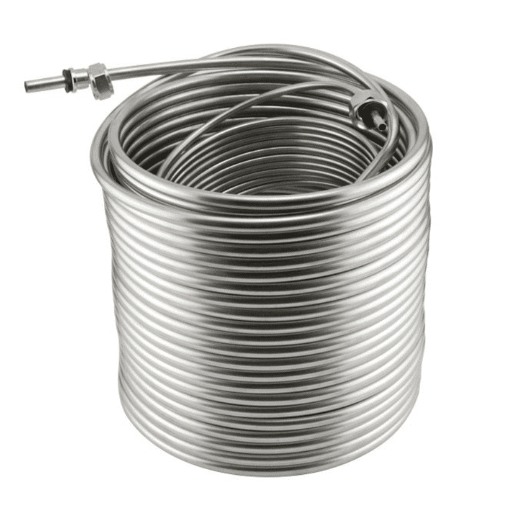
Stainless steel is a composition of elements mostly consisting of iron and chromium with other elements like nickel or molybdenum to increase its strength and corrosion resistance. Chromium creates an oxide film, also called a passive film, that protects from the rusting effect which lengthens its service life. The material’s capability to withstand forces and harsh temperatures, whilst being minimal maintenance, makes it applicable for the construction sector, automotive industry, as well as the manufacture of medical devices.
What is Stainless Steel?
Stainless steel is one of the most ubiquitous materials found almost everywhere in the world today, thanks to its corrosion resistance and mechanical durability properties. Various other elements besides iron and chromium are also present in significant quantities, including nickel, carbon, and manganese. The material contains 10.5% to 30% chromium, which aids in preventing rusting and staining.
Four Main Classes of Stainless Steel:
- Austenitic Stainless Steel – Most common, highly resistant to corrosion, excellent weldability
- Ferritic Stainless Steel – Magnetic properties, good corrosion resistance
- Martensitic Stainless Steel – High strength, can be hardened
- Duplex Stainless Steel – Hybrid form with enhanced strength
Properties of Stainless Steel
Stainless steel is a metallurgical alloy consisting largely of iron, carbon, and chromium (not less than 10.5%). Among its most notable qualities is the high degree of corrosion resistance which this material achieves due to the presence of a very thin, transparent oxide layer on the surface, known as a passive layer. This layer acts as an inhibitor of oxidation and other related chemical reactions.
Key Properties:
- Corrosion Resistance: Passive layer prevents oxidation and chemical reactions
- Non-toxic: Safe for food contact and medical applications
- High Temperature Resistance: Withstands extreme temperatures without failure
- Formability: Can be molded and shaped without cracking
- Hygiene: Easy to clean and unlikely to support bacterial growth
- Durability: Excellent tensile strength and mechanical properties
Types of Stainless Steel

| Type | Key Characteristics | Common Applications |
|---|---|---|
| Austenitic Stainless Steel | High chromium and nickel content, excellent corrosion resistance, non-magnetic (e.g., 304, 316) | Kitchen appliances, chemical industry, food processing |
| Ferritic Stainless Steel | Less nickel, magnetic, good stress corrosion cracking resistance | Automotive exhausts, home appliances |
| Martensitic Stainless Steel | High strength, can be hardened and tempered, moderate corrosion resistance | Knives, surgical instruments, cutting tools |
| Duplex Stainless Steel | Hybrid of austenitic and ferritic, enhanced strength, excellent pitting resistance | Oil and gas industry, marine vessels |
| Precipitation Hardening | Strengthens through heat treatment, excellent mechanical characteristics | Aircraft parts, aerospace components |
Stainless Steel Coil Tubing
A stainless steel pipe coil is crucial for applications requiring fluid transfer, strength, durability, and corrosion resistance. There is wide use in the chemical process industry, oil and gas, and healthcare equipment. High-quality stainless steel alloys such as 304, 316, or duplex grades are employed in its manufacture, thereby achieving very high strength and flexibility as well as resistance to environmental elements.
What is Coil Tubing?
Coiled tubing features one lengthy uninterrupted tubular made from steel or plastic, wound on a reel for easier transport and utilization. This design is indispensable in the petroleum industry for activities such as drilling, well interventions, and well completions.
Benefits of Using Stainless Steel Coil Tubing
- Outstanding Anti-Corrosion Properties: Safe for long-term use in extreme conditions including high temperatures, aggressive chemicals, and saline media
- Reduced Maintenance Costs: Less downtime, improved productivity
- Excellent Tensile Strength: Performs well under high pressures in drilling, fracturing, and fluid transfers
- Smooth Inner Surface: Reduces likelihood of clogs, prolongs usability
- Technology Integration: Compatible with fiber optic cables for data transmission
- Environmental Sustainability: Recyclable material supporting ethical corporate responsibility
Applications of Stainless Steel Tubing Coil
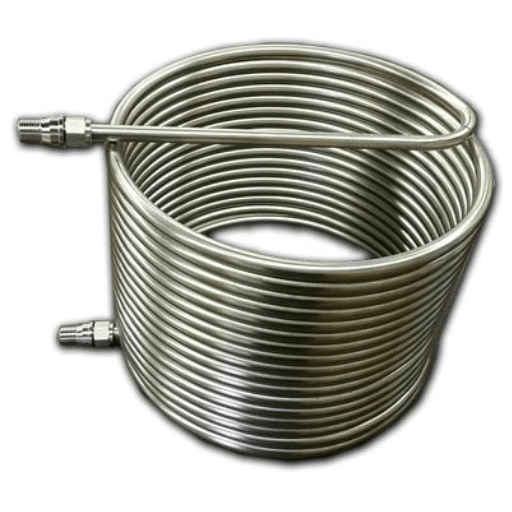
Petroleum and Gas Industries
Stainless steel pipe coil is commonly used in oil and gas related activities for transportation of gases and liquids under high temperatures and pressures.
Condensers and Heat Exchangers
Due to excellent thermal conduction properties, stainless steel pipe coil is essential in heat exchangers. This material ensures efficient heat exchange in power and chemical industries.
Healthcare Devices
The biocompatibility and hygienic nature of stainless steel make it excellent for medical use. Coiled tubing is used in surgical procedures, diagnostic equipment, and minimally invasive devices.
The Food and Beverage Industry
Hygienic transport of milk, juices, beverages, and other liquids is possible with stainless steel pipe coil. It is highly cleanable and upholds strict hygiene standards.
The Automotive Industry
The high strength and malleability of stainless steel tubes make them popular in automotive applications including fuel lines, hydraulic piping, and exhaust systems.
Specifications of Stainless Steel Tubing
Stainless steel tubing is divided according to grade, size, coating, and mechanical strength. Common grades include 304, 316, and 430, each offering advantages in corrosion resistance, heat resistance, or cost-effectiveness.
International Standards Compliance
- ASTM A269: For seamless and welded tubes made of austenitic stainless steel
- ASTM A270: For tubes used in sanitary applications
Understanding OD × Specification
The outer diameter (OD) is critical in design and production, influencing proper fitment and performance. Precision sectors like medical and aerospace industries require exact OD measurements. Current industry trends show preference for tubes with precise OD measurements in the range of 0.5mm to 20mm, indicating a move toward more compact and precise designs.
Comparing Different Grades of Stainless Steel
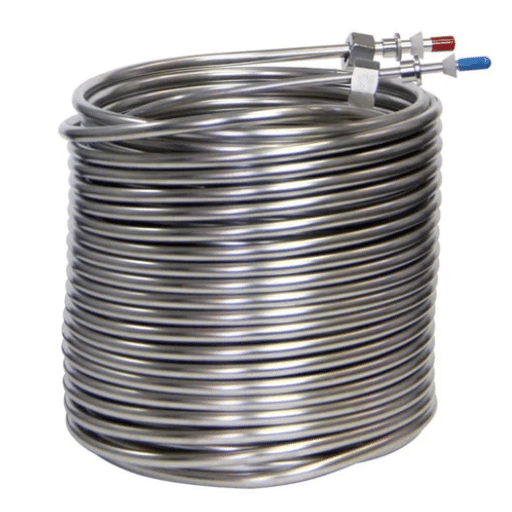
| Grade | Composition | Best Use Cases | Cost |
|---|---|---|---|
| 304 Stainless Steel | 18-20% Chromium, 8-10.5% Nickel | General purpose, areas with low chloride concentration | Most economical |
| 316 Stainless Steel | 2-3% Molybdenum added, enhanced composition | Marine settings, chemical processing, high chloride environments | Higher cost |
| 430 Stainless Steel | 16-18% Chromium, no nickel (ferritic) | Decorative applications, interior panels, household appliances | Budget-friendly |
Stainless Steel Pipe Coil in Industrial Applications
Heat Exchangers
Preferred for high thermal conductivity and chemical resistance. Suitable for operations involving extreme temperatures and corrosive fluids, excellent for thermal cycling patterns.
Food and Beverage Processing
Designed for sanitary and corrosive environments. Used in pasteurization, chilling, and movement of liquid products while maintaining health and safety standards.
Chemical Processing Plants
Utilized to process various catalysts, solvents, acids, and aggressive chemicals. Corrosion resistance ensures safe handling of aggressive substances.
Power Generation
Significant function in power plants, especially steam-filled turbines and boiler systems. High thermal resistivity and anti-oxidant properties enable operation in high-pressure steam environments.
Pharmaceutical and Biotechnology Industries
Meets cleanliness and sterility thresholds. Used in heating, cooling, and conveying materials. Easy to sterilize and clean without risk of contamination.
Use in HVAC Systems
Central to HVAC structure due to proven thermal conductance, wear resistance, and longevity. Found in heat exchangers, condensers, and evaporator units. Tolerates high pressure in domestic and commercial applications at extreme temperatures.
Growing Demand Drivers:
- Focus on equipment efficiency improvement
- Longer lifespan with minimal maintenance requirements
- No reactions with surroundings, ensuring air quality
- Compliance with current health and safety regulations
Applications in the Chemical Industry
| Application | Function | Operating Conditions |
|---|---|---|
| Heat Exchangers | Enhanced heat transfer through increased surface area | Thermal conductivity: ~16 W/(m·K) |
| Distillation Columns | Separation of chemical components | High resistance to acids and alkalis |
| Jacketed Reactors | Temperature control during chemical synthesis | Operating pressure up to 25 MPa |
| Storage Tank Systems | Temperature control for volatile chemicals | Prevents contamination of stored fluids |
| Evaporators | Concentration of solids from liquid mixtures | High thermal efficiency, minimal downtime |
Role in Oil and Gas Sector
Stainless steel qualifies for wide-ranging applications in the oil and gas industries due to its exceptional physical and chemical properties. Used in pipelines, storage tanks, and production equipment that must withstand high pressures, temperatures, and corrosive materials.
Choosing the Right Stainless Steel Pipe Coil
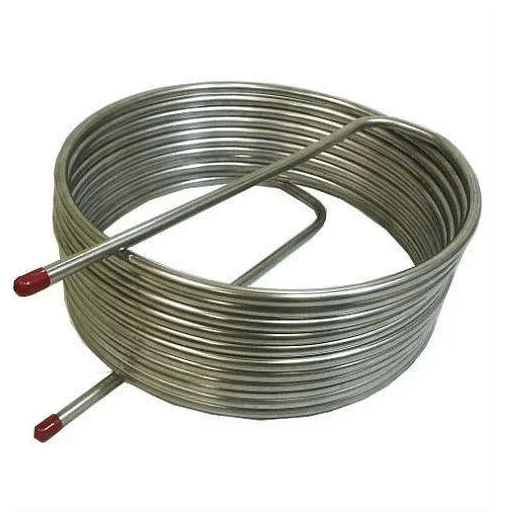
Grade and Composition of Material
Select the proper grade for the specific operating environment. 304 is the workhorse for general applications. Grades 316 or duplex are more appropriate for higher temperatures and corrosion strength.
Pressure and Temperature
Ensure the material possesses sufficient tensile strength and thermal conductivity to withstand operational conditions.
Adherence to Industry Recommendations
Safety cannot be ensured unless appropriate certifications are met (ASME, ASTM, or ISO). Certification proves quality standards compliance and proper testing.
Usage Environment
Requirements differ by application. Chemical process engineering may require resistance to sulfur-containing environments and high fatigue strength. Green technologies impose constraints on heat transfer and thermodynamic properties.
Analyzing the Cost and Service Life
Conduct cost-benefit analysis before committing. High-end stainless steel may be expensive initially, but reduced replacement needs and maintenance make it cost-effective long-term.
Factors to Consider When Selecting
- Environmental Resilience: Rust resistance, heat tolerance, expansion/contraction properties
- Functional Adequacy: Correct specifications for load, speed, and industry standards compliance
- Energy Efficiency: Energy-efficient equipment reduces long-term operating costs
- Technical Support: Availability of support resources and replacement parts
- Supply Logistics: Evaluate supply chain and degree of use
Understanding Tube Dimensions and Specifications
When choosing appropriate dimensions and specifications for tubing, consider diameter, wall thickness, and material in relation to the application. Correct nominal and interior diameters ensure proper system fit. Wall thickness determines strength under internal and external forces.
Critical Specifications:
- Outer Diameter (OD): External measurement affecting fitment
- Inner Diameter (ID): Internal measurement affecting flow capacity
- Wall Thickness: Determines structural strength
- Pressure Rating: Usually measured in PSI (pounds per square inch)
- Material Grade: 304 and 316 most common for corrosion and heat resistance
- Standards Compliance: ASTM and other quality standards
Common Mistakes to Avoid
1. Inappropriate Environmental Considerations
Ignoring precise service conditions (chloride levels in marine settings, solvents in the environment) can cause corrosion failures.
2. Overlooking Applicable Standards
Not adhering to standards like ASTM templates can lead to difficult operations, cost overruns, and time delays.
3. Not Recognizing Cost vs. Efficiency Trade-offs
Choosing cheaper materials without considering longevity leads to more expensive long-term maintenance and repairs.
4. Using Outdated or Generalized Data
Basing material selection on old or non-specific information results in wrong decisions. Use current, project-specific data for proper technical and ecological requirements.
References
-
Homework 6 CM310 – A resource from Michigan Technological University discussing thermal conductivity in stainless steel tubes.
-
Heat Transfer of a Multiple Helical Coil Heat Exchanger – A thesis from Texas A&M University on heat transfer in stainless steel helical coils.
-
Stainless Steel Coil Manufacturers Suppliers – A directory of stainless steel coil manufacturers and suppliers, providing insights into industrial applications.
Frequently Asked Questions (FAQ)
What’s the meaning of stainless steel pipe coil and where can it be used?
Each one of the industries makes use of stainless steel pipe coils and that’s because of its notable corrosive and mechanical resistance properties. For instance, it’s the best to use brewing of beer or heat transferring systems. A number of types of stainless steel tubing are known and they include the ones without seams, welded and fillet tubes allowing them to withstand various temperatures and pressures.
How does stainless steel piping and tubing ship?
Transporting stainless steel coils of pipe material requires the use of freight services to ensure that the goods are transported safely. In such cases quantity discounts may be available and they may offer based on presence of the quantity or distance traveled. If the cost has to be specified, advice may be requested depending on each client’s specifics.
What Are the Sizes of stainless ful bodied steel tubes coils?
There are different sizes of stainless steel tubing rolls that are available in different lengths i.e. 50ft and 100ft along with many options of outside (OD) and. It is also manufactured in varying ID (Inner Diameter), which helps in using it to connect different systems such as jockey boxes or brewing units, among others.
Are all shapes of different stainless steel coils bendable?
Yes, any specified application requires that the stainless steel coils do not exist in the shipment delivered. Bending is a requirement where curves and angles are considered and are met in order to perform an installation. This process is common for brewing systems, HVAC or similar arrangements. The bendable coil, however, should be bent in a manner that does not compromise its structure.
What are seamless and welded tubing?
Seamless tubing is produced without any welded joints and is good for high-pressure applications. Welded tubing, however, is made by welding the strips of flat stainless steel and is therefore suitable for low pressures. While both products are highly corrosion resistant and allow usage in diverse applications.
Why does it matter to use 304SS in steel pipe within steel tubes?
One of the most well-liked grades of steel, that being 304, also known as SS304, is such for the excellent corrosion resistance and formability within tubes. This is because it is widely applied in food and drink processing to include breweries, where cleanliness and rust resistance are paramount.
What should I look for in a stainless-steel tubing coil for outdoor applications?
The environmental conditions, level of exposure, and the operating use are some of the issues to be considered when choosing stainless tubing coils for outdoor exposure. Hight corrosion resistant tubing coils like those of 316SS, may be suitable when temperatures are extreme. Furthermore, check the size and other characteristics follow your project.
How helpful is the use of stainless steel pipe coil in beer production?
Stainless steel pipe coils significantly improve brewing processes, thanks to their resistance to corrosion assisting in preserving the quality of the wort. In addition, they can be used in heat exchangers and their cleaning is, which is essential for meeting the high hygiene requirements in brewing.
How does a stainless steel tube coil look like?
A stainless steel tube coil is a spin-tube made from stainless steel and designed to enhance heat exchange and flow of fluids. Due to its strength and corrosion resistance, it finds application in heating systems, coolers, brewing equipment, and other areas.

